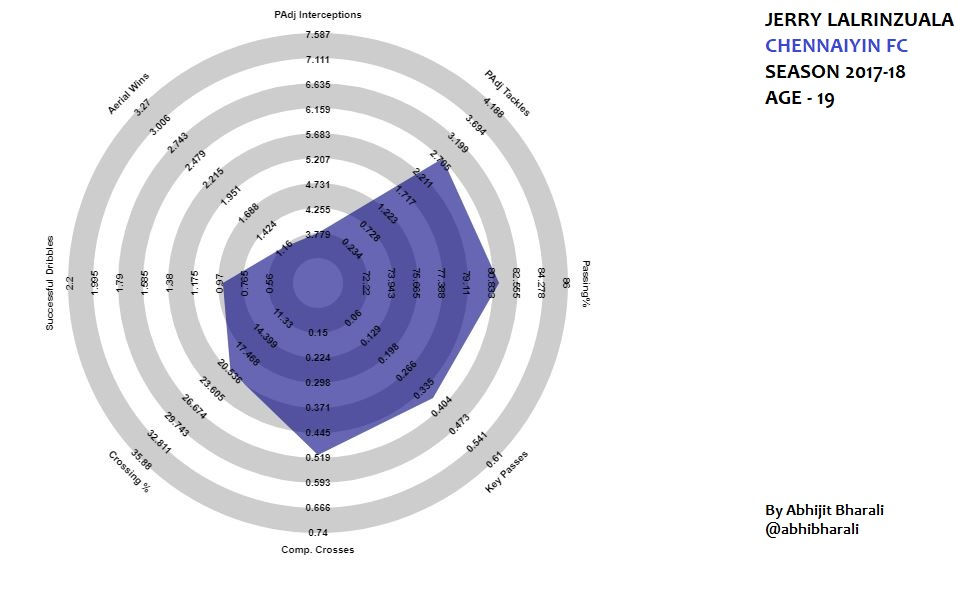
India’s national football team is blessed with a multitude of options at the left fullback position. In the recently-concluded Intercontinental Cup contested by India, Kenya, New Zealand and Chinese Taipei, the Blue Tigers had five defenders out of the eight called up who had played left-back in the 2017–18 Indian domestic season.
India’s domestic football structure is fragmented. There are two top divisions — the Indian Super League and the I-League — but majority of the national team players are based at Indian Super League clubs. That said, there are a few national team selections from the I-League teams as well, handing head coach Stephen Constantine a large pool of players to choose his squad from.
Let’s look left
Judging by the numbers alone, there is big competition for places at left fullback and as of now, Indian Super League side Mumbai City’s Subhasish Bose is the first choice in the position. However, Chennaiyin’s title-winning leftback and teenage sensation Jerry Lalrinzuala, Kerala Blasters’ dependable Lalruatthara and long-time national team regular Narayan Das are running the race alongside Bose, who can also consider East Bengal’s versatile Salam Ranjan Singh as a competition.
Diving deep, all the aforementioned players play in a common position for their respective club teams, but each one has different attributes that will be explained with the help of radars a bit later. All of them play for teams with varied playing styles (no, Indian clubs don’t all play the same way) so key performance indicators may vary depending on a particular club’s tactical designs.
Talking of radars, they stand out as a great visualisation tool to communicate data to coaches, managers, recruiters, etc. As you might know by now, data on Indian football isn’t as easily accessible as foreign leagues, but there are folks who continue to do some great work on Indian football despite the paucity of good, publicly available data.
In the radars for Indian football’s left-backs, I have only included those players who played more than 1000 minutes in the 2017–18 season. Players from both leagues have been considered. Also, the radar boundaries — a bit unusual than what those in normal radars are like — represent the highest and lowest statistical production of the players across the two leagues. All units are measured in per 90, and interceptions and tackles are adjusted for possession.
So, without further ado, here we go!

Narayan Das, who played at FC Goa last season but has now moved to Delhi Dynamos, stands out because of his passing. His 86% passing accuracy was the best in Indian football among left-backs, and that can be attributed to his team’s playing style and tactical designs.
FC Goa were the passmasters of the ISL and had the highest average possession (59%) of all teams in the league in 2017–18. Their Spanish head coach Sergio Lobera favoured an attractive, passing style of football that saw the team score a league-highest 43 goals.
Predictably, FC Goa were not overly dependent on crosses from fullbacks and instead played through the central zones or did combination play to penetrate the penalty area from out wide, hence Das’ crossing statistics aren’t that great, also leading to very few key passes.
Talking of high chance creation numbers, Aizawl FC’s 21-year-old left-back Lalram Hmunmawia hasn’t yet been on India coach Constantine’s radar but is a chance creating cross monster among fellow left-backs.

He had the highest crossing percentage of all left-backs who played more than 1000 minutes last season and also had more completed crosses per 90 minutes than average, leading to 0.61 key passes per 90.
In fact, Hmunmawia’s teammate on the other flank, Laldinliana Renthlei, also posted respectable crossing and key passing (0.43 p90) numbers from right-back, an indicator of how Aizawl liked to attack with from out wide using their fullbacks. Laldinliana has already moved to ISL champions Chennaiyin and a big Super League move for Hmunmawia isn’t too far, judging by his numbers.
We have seen how visually distinctive radars are based on various performance indicators and we can even judge playing styles at different clubs. Shown below are the radars of India’s number one left-back Subhasish Bose and championship winning left-back Jerry.


One can figure out from their respective radars that Bose has considerable aerial prowess than the 5ft 8in Jerry. Therefore, it comes as little surprise that Constantine, who seems to favour height and physicality in his teams, has quickly settled on Bose as his primary left-back as India build up for the 2019 AFC Asian Cup finals.
For now, I leave it at this much insight only, comparing a few Indian left-backs and suggesting how helpful radars can be in evaluating players, although they shouldn’t be considered the be-all and end-all of player evaluation methods. Here’s finishing with one of the youngest left-backs in India’s top-flight, Sanjeev Stalin, whose radar doesn’t look too shabby considering he is only 17.

Data collated from various sources.
Radars created at http://cboutaud.github.io/radar/radar.html.

Comments